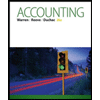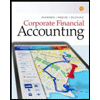Plastic Enterprises’ stockholders’ equity account is as follows: Common stock (280,000 shares at $3.50 par) $980,000 Paid-in capital in excess of par $900,000 Retained earnings $1,200,000 Total stockholders’ equity $3,080,000 The earnings available for the common stockholders are $280,000 and are included as part of the $1,200,000 retained earnings. Calculate the maximum dividend per share that the firm can pay if the legal capital includes all paid-in capital. Calculate the maximum dividend per share that the firm can pay if the legal capital includes only the value of the common stock. If Plastic Enterprises has $25,000 in cash, what is the largest per-share dividend it can pay without borrowing, assuming legal capital includes all paid-in capital?
Plastic Enterprises’ stockholders’ equity account is as follows: Common stock (280,000 shares at $3.50 par) $980,000 Paid-in capital in excess of par $900,000 Retained earnings $1,200,000 Total stockholders’ equity $3,080,000 The earnings available for the common stockholders are $280,000 and are included as part of the $1,200,000 retained earnings. Calculate the maximum dividend per share that the firm can pay if the legal capital includes all paid-in capital. Calculate the maximum dividend per share that the firm can pay if the legal capital includes only the value of the common stock. If Plastic Enterprises has $25,000 in cash, what is the largest per-share dividend it can pay without borrowing, assuming legal capital includes all paid-in capital?
Cornerstones of Financial Accounting
4th Edition
ISBN:9781337690881
Author:Jay Rich, Jeff Jones
Publisher:Jay Rich, Jeff Jones
Chapter10: Stockholder's Equity
Section: Chapter Questions
Problem 5MCQ
Related questions
Question
100%
Plastic Enterprises’
Common stock (280,000 shares at $3.50 par) $980,000
Paid-in capital in excess of par $900,000
Total stockholders’ equity $3,080,000
The earnings available for the common stockholders are $280,000 and are included as part of the $1,200,000 retained earnings.
- Calculate the maximum dividend per share that the firm can pay if the legal capital includes all paid-in capital.
- Calculate the maximum dividend per share that the firm can pay if the legal capital includes only the value of the common stock.
- If Plastic Enterprises has $25,000 in cash, what is the largest per-share dividend it can pay without borrowing, assuming legal capital includes all paid-in capital?
- What the purpose of capital impairment restrictions when developing a dividend policy?
Expert Solution
This question has been solved!
Explore an expertly crafted, step-by-step solution for a thorough understanding of key concepts.
This is a popular solution!
Trending now
This is a popular solution!
Step by step
Solved in 7 steps with 6 images

Knowledge Booster
Learn more about
Need a deep-dive on the concept behind this application? Look no further. Learn more about this topic, finance and related others by exploring similar questions and additional content below.Recommended textbooks for you

Cornerstones of Financial Accounting
Accounting
ISBN:
9781337690881
Author:
Jay Rich, Jeff Jones
Publisher:
Cengage Learning

Managerial Accounting: The Cornerstone of Busines…
Accounting
ISBN:
9781337115773
Author:
Maryanne M. Mowen, Don R. Hansen, Dan L. Heitger
Publisher:
Cengage Learning

Accounting (Text Only)
Accounting
ISBN:
9781285743615
Author:
Carl Warren, James M. Reeve, Jonathan Duchac
Publisher:
Cengage Learning

Cornerstones of Financial Accounting
Accounting
ISBN:
9781337690881
Author:
Jay Rich, Jeff Jones
Publisher:
Cengage Learning

Managerial Accounting: The Cornerstone of Busines…
Accounting
ISBN:
9781337115773
Author:
Maryanne M. Mowen, Don R. Hansen, Dan L. Heitger
Publisher:
Cengage Learning

Accounting (Text Only)
Accounting
ISBN:
9781285743615
Author:
Carl Warren, James M. Reeve, Jonathan Duchac
Publisher:
Cengage Learning

Corporate Financial Accounting
Accounting
ISBN:
9781305653535
Author:
Carl Warren, James M. Reeve, Jonathan Duchac
Publisher:
Cengage Learning

Intermediate Accounting: Reporting And Analysis
Accounting
ISBN:
9781337788281
Author:
James M. Wahlen, Jefferson P. Jones, Donald Pagach
Publisher:
Cengage Learning

Principles of Accounting Volume 1
Accounting
ISBN:
9781947172685
Author:
OpenStax
Publisher:
OpenStax College